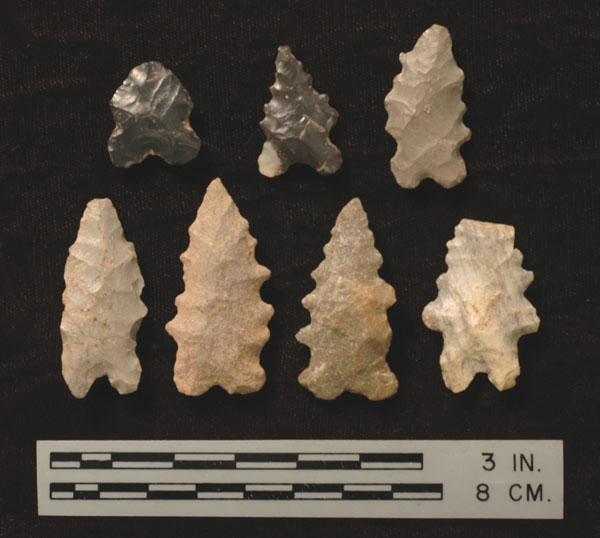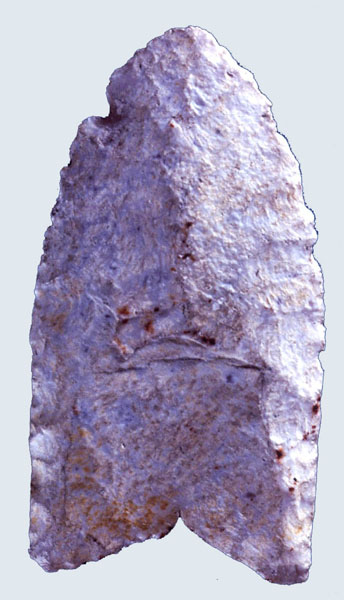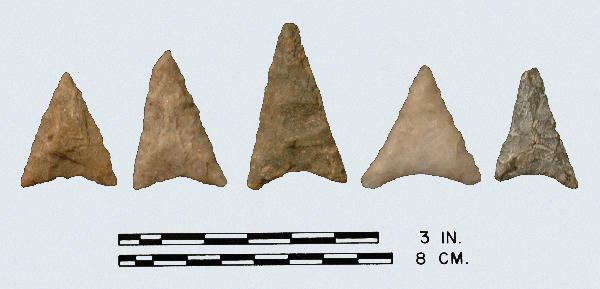
St. Albans: Top Row: all chert; Bottom Row: chert, quartzite, quartzite, chert.
Type Bifurcate Early-Archaic
Defining Attributes
The St. Albans is a long, narrow, side notched point with a notched base.
Chronology
The St. Albans point dates to the Early Archaic period 6800 to 6500 BCE. Broyles (1971) noted that the St. Albans point type occurs before the LeCroy and after the Kirk Corner Notched. McAvoy (1997) suggests a time span of 7000 to 6750 BCE based on points recovered in association with the Fort Nottoway type along the Nottoway River in Virginia.
Description
- Blade: The blade is triangular with straight or excurvate sides which are often slightly serrated. Tips are sharp and slightly off center.
- Base: The base is notched (sometimes very deeply) by the removal of two or three large flakes. Some examples show evidence of basal smoothing. On many examples the base is as wide as the shoulder. Side notches are long and shallow, and shoulders slope toward the tip.
- Size: Length ranges from 22 to 50 mm. Width ranges from 13 to 32 mm. Thickness ranges from 4 to 9 mm.
- Technique of manufacture: Soft percussion flaking followed by pressure flaking around the basal notch and serrated blade.
Discussion
Broyles (1971) divides the St. Albans type into two varieties based on points recovered from two different locations at the St. Albans site in Kanawha County, West Virginia. Variety A has better defined shoulders, serrated edges, and basal smoothing. They tend to be shorter and wider than Variety B. Broyles notes that it would be impossible to separate these two varieties in a surface collection; therefore, they cannot be given separate type status. St. Albans points tend not to have a stem that lobe out to the side as much as the earlier MacCorkle type.
Defined in Literature
Broyles (1971) originally defined this type based on points recovered from the St. Albans Site in Kanawha County, West Virginia.
References




